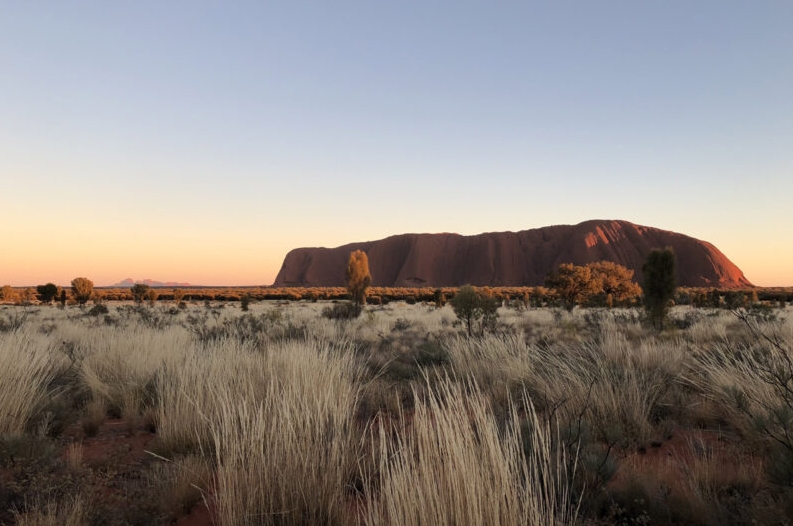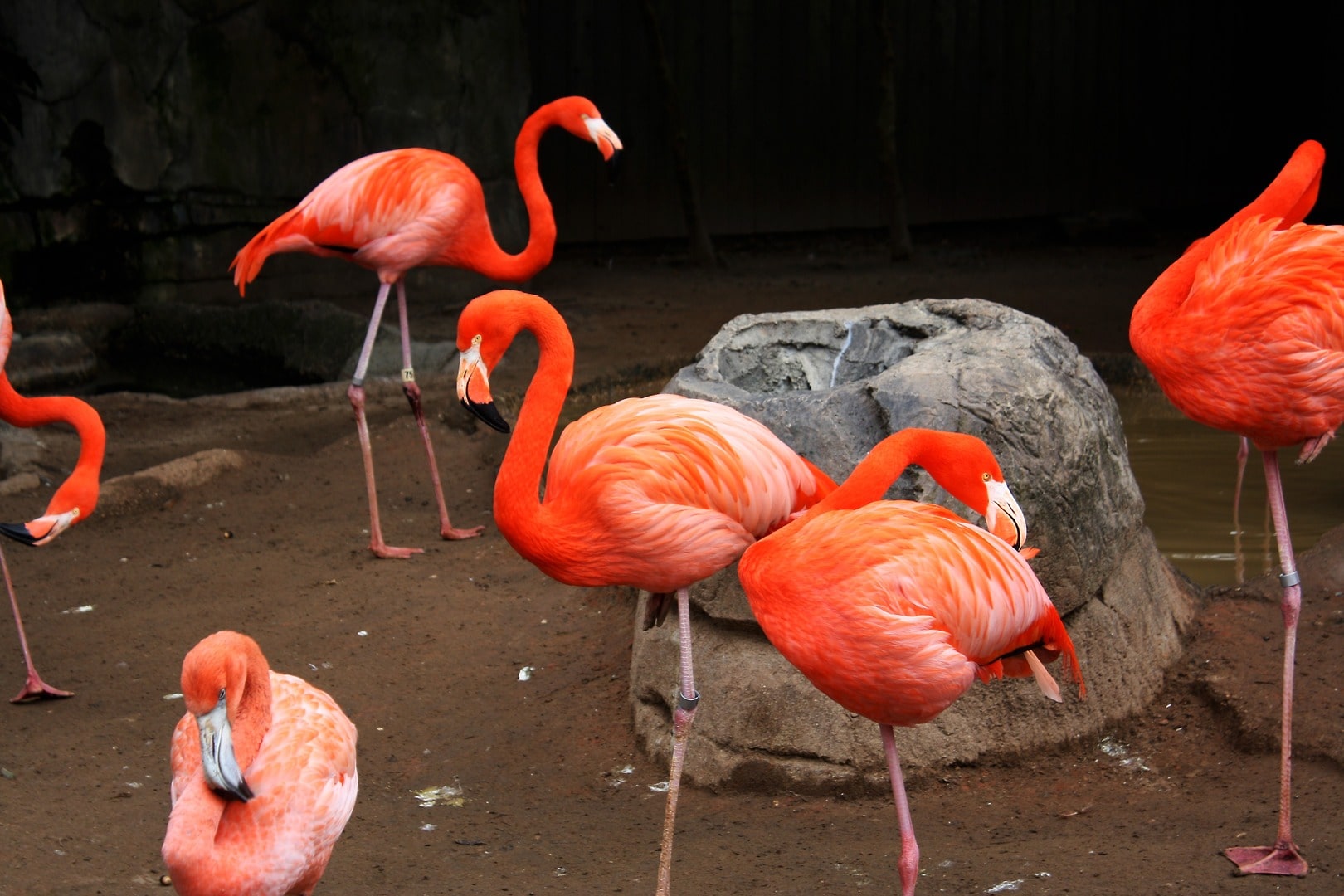For two couples, Uluṟu has been more than a destination – it’s been a spiritual touchstone across decades of changing landscapes, culture and understanding.
Few places on Earth possess the power to transform a visitor with a single glance. Uluṟu is one of them. Towering out of the red heart of Australia, it has drawn people from every corner of the world – and left them forever changed.
Among those who have felt its pull time and again are Brian and Lynda Ralph, and June and Geoff Tidey, two couples whose journeys to Uluṟu span decades.
First encounters with the magic of Uluṟu
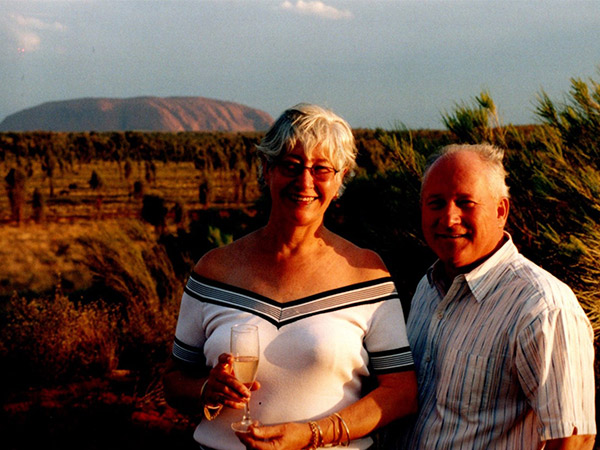
Lynda and Brian at the Sounds of Silence Dinner in 2004. (Image: Brian and Lynda Ralph)
When geography teachers Brian and Lynda Ralph first approached Uluṟu in the early 1970s, it was a raw, untamed experience.
“We drove in, and it was late evening, and we thought, ‘Okay, this is huge,’” Brian recalls. But by the next morning, heavy rain had transformed the landscape.
“We woke up, it was pouring rain, and the Rock was silver, just the way the light was in the early morning with waterfalls cascading down its sides. Unbelievable,” Brian says.
A family connection
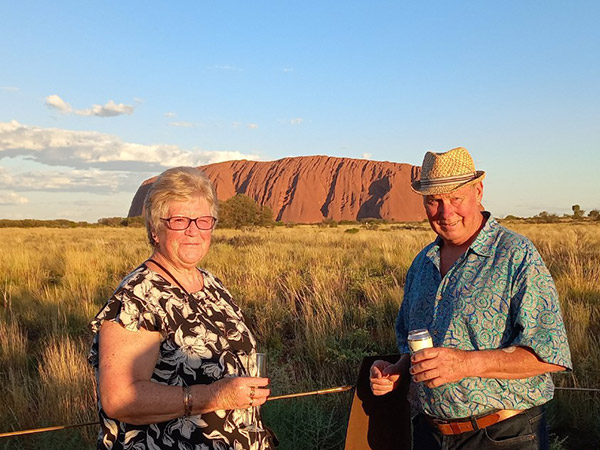
June and Geoff’s Uluru journey was inspired by their daughter. (Image: June and Geoff Tidey)
For June and Geoff Tidey, originally from Buckinghamshire in the UK, their journey to Uluṟu began much later, in 2008, sparked by their daughter, who has worked and lived in the region for the majority of the last 20 years.
“We visited because of her,” June says, “but we fell in love with the place ourselves.” Over more than 10 visits, June and Geoff found Uluṟu to be both a family touchstone and a personal retreat.
“It’s a very spiritual place, very calming,” she reflects. “And it’s not what you expect. People imagine a barren desert – but it’s green, it’s full of life.”
Watching change unfold
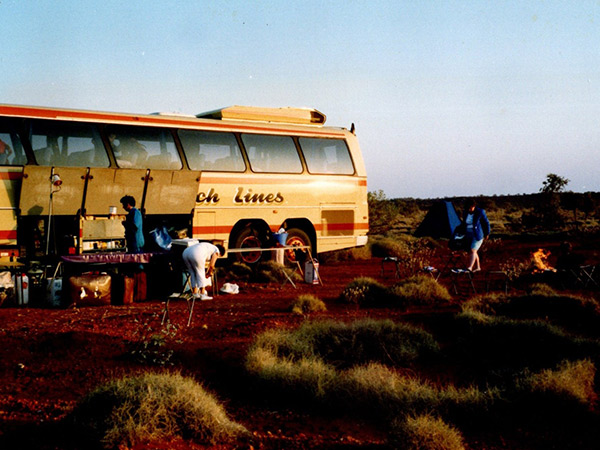
Camping in 1991. (Image: Brian and Lynda Ralph)
Both couples have witnessed – and welcomed – the sweeping changes that have transformed how visitors engage with Uluṟu. For Brian and Lynda, the evolution has been profound over their seven or eight visits (they can’t quite remember how many times they’ve been).
“In the 70s, people would just hop out of the bus and, often without a second thought, they’d climb the Rock,” Brian says.
“But now, there’s a deep respect. And the Aṉangu culture has been openly recognised and embraced, and visitors are far more conscious of the cultural importance of the site.”
“We didn’t know enough,” Brian admits. “But there wasn’t much information available then. Looking back, I just regret we didn’t understand the cultural significance.”
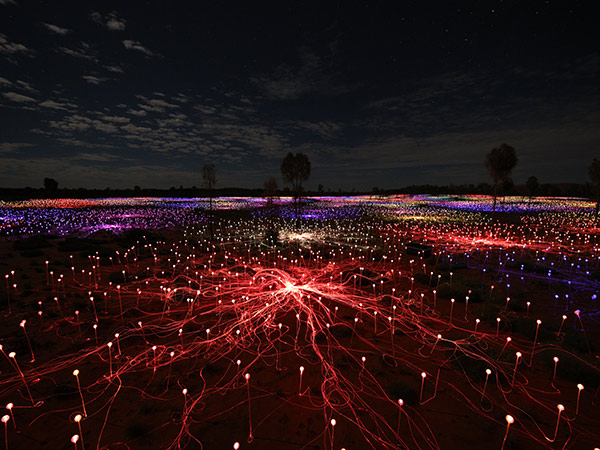
The mesmerising Uluṟu Field of Light installation by Bruce Munro. (Image: Voyages Indigenous Tourism Australia)
Brian points to the Uluṟu-Kata Tjuṯa’s Traditional Owners, the respectful interpretive signs, and the re-routing of roads to protect sacred sites. “It’s heartwarming,” he says. “You feel like you’re being invited to experience something truly special, but with the understanding that you are a guest.”
Brian and Lynda also point out the difference in accommodation options over the years.
“[In the early days] we were in two-man tents on red dirt and that was it, there was nothing else,” Brian says.
“Now, with Ayers Rock Resort, for people considering going there, there’s a really wide range of accommodation and pricing. There are a variety of options. We usually stay at the Outback Hotel.”
June and Geoff have visited Uluṟu more than 10 times, but the exact number is difficult to recall. They, too, have a favourite accommodation – Emu Walk Apartments – and have discovered a favourite room as well.
“We always stay in the same room – 209,” June laughs. “The room is a one-bedroom apartment, it’s so good, so centrally located, we just loved it, so we’ve asked for it ever since!”
Memories made across generations
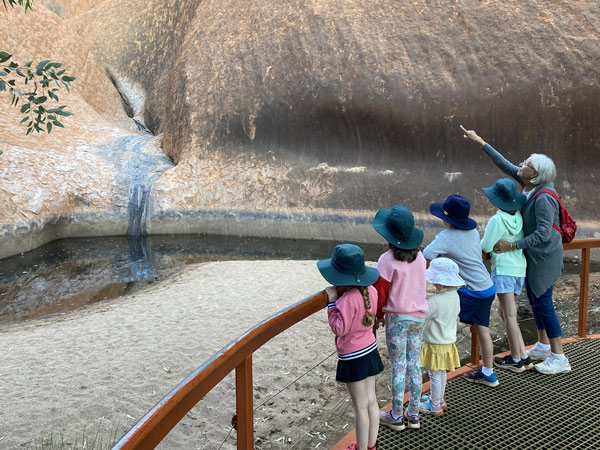
The Ralphs visited with their grandchildren in 2022. (Image: Brian and Lynda Ralph)
For the Ralphs, Uluṟu has become a part of their family’s story. They’ve returned with their children, and later their grandchildren, weaving memories of sunrise walks, Indigenous tours and quiet moments of awe into the fabric of their lives.
“Every time we visit, we discover something new,” Lynda says. “Taking our grandchildren to see the Aboriginal rock art and watch their faces light up – it’s unforgettable.”
“As teachers, we started teaching very differently as we became more and more aware of the cultural importance [of Uluṟu] to the local people and being sensitive to that,” Brian tells Australian Traveller.
The Tideys, too, have found fresh experiences on each return trip. From laidback stays at their beloved Emu Walk Apartments to memorable moments with their daughter’s family, their connection has deepened beyond sightseeing.
“It’s not just about seeing Uluṟu anymore,” June says. “It’s about feeling it. Listening, learning, respecting.”
“For the next trip, we want to do the Wintjiri Wiṟu dinner and drone show. That’s the only one we haven’t done.”
Why Uluṟu still calls them back
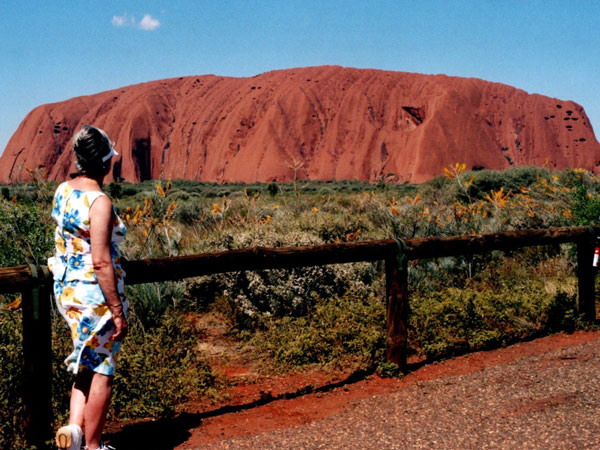
“Seek to understand, not just to see.” – Brian Ralph (Image: Brian and Lynda Ralph)
If they could go back to their first visits, Brian and Lynda know exactly what advice they’d give their younger selves. “Learn more,” Brian says simply. “Seek to understand, not just to see.”
June, meanwhile, would advise newcomers to slow down. “Spend at least five days if you can. Have fun and join all the experiences that you can.”
Despite the years, both couples feel the magnetic pull of Uluṟu as strongly as ever. “It’s become a very special place to us,” Brian says. “It always feels like coming home.”
As for future visits? “Absolutely,” Lynda says. “We’ll go back again and again.”
Because some places don’t just mark the map. They mark the soul.

